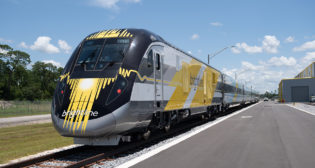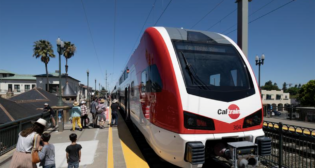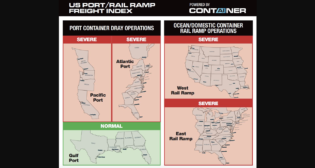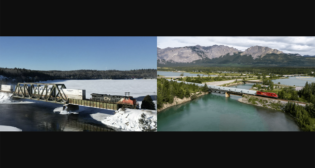
Quebec studies feasibility of open-access iron ore line
Written by David Thomas, Canadian Contributing EditorHow much Quebec is counting on an eventual northern mining bonanza is evident when the C$20 million contract was awarded Nov. 20, even as the government says it must cut C$3.2 billion of existing spending to balance its budget. CN dropped its own study of a new Labrador Trench line last year because of failing demand for ore.
Ontario’s comparable “Ring of Fire” development vision has faded to black because of the absence of rail infrastructure, and Quebec is hoping its “Plan Nord” will avoid such premature demise.
“The mining sector is highly cyclical, but railway projects are very long-term,” Canarail CEO Miguel Valero told Railway Age Nov. 21. “Iron ore will come back; it’s a matter of time. And the iron ore in that area is exceptional.”
While the feasibility study is wide open (it may even recommend extending the existing Quebec, North Shore & Labrador and Cartier [Arcelor Mittal] railways instead), there is a government mandate that any new line be “multi-user and open access.” In such a scenario, the railway itself would maintain the track and dispatch trains independently owned or contracted by the ore shippers. Spurs from the trunk line’s northern terminus to the mines would be built by the shippers.
Canarail has one year to complete the study, though it must wait for spring to sample alignment geology in a helicopter hopscotch of the black fly-infested taiga and muskeg. To support its geotechnical survey, the consulting firm intends to hire Labrador Innu natives inured to the hostile environment.
“The intense winter snow and cold also make this particularly difficult terrain to build and run a railway,” said Valero.
The hazardous nature of northern railroading was evident Nov. 6 when a QNS&L train hit a landslide north of Sept-Iles, causing its two locomotives to plunge into the Moise River and drowning the train’s single engineer.
The QNS&L, owned by global mining giant Rio Tinto, collects $60 million a year from Cliffs Natural Resources—for hauling nothing. Cleveland-based Cliffs contracted QNS&L in 2011 for a minimum annual tonnage at a time when iron ore was worth US$160 a ton. But ore prices have dropped by more than half since then and the markets for Cliffs’ Bloom Lake mine melted away. Now Cliffs says it will shut down its Bloom Lake and Wabash ore operations, removing from the calculation what was expected to be a new railway line’s biggest initial shipper.
Cliffs is on the hook for approximately US$350 million under its contract with QNS&L (about half the closure cost of the mine), according to a Nov. 19 report in the Financial Post. The company paid US$4.9 billion just three years ago for the now less-than-worthless mine.
Canarail’s contract is not dependent on iron ore prices, and the company has considerable experience with long-tailed projects, include the proposed East African railway through Tanzania, Rwanda, and Burundi; a mooted mineral line in Afghanistan; and Saudi Arabia’s nearly complete 1,500-mile North-South Railway.
“Twenty years ago nobody would have invested a cent in railways, and now the sector is booming all over the world,” Valero said.



